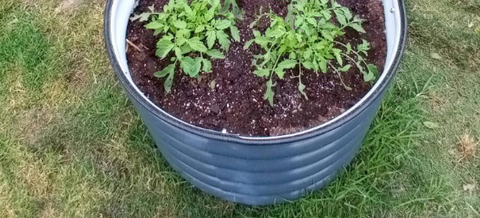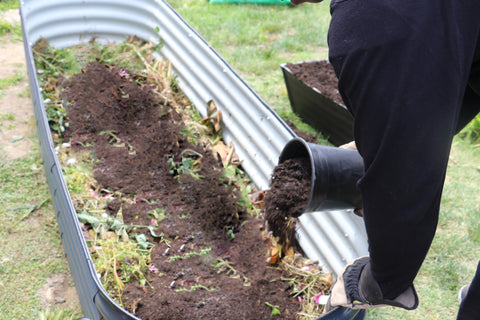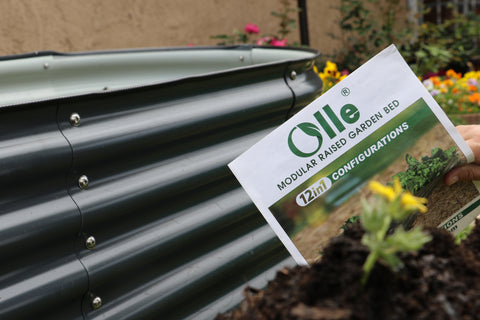Knowledge from Olle Garden Bed: Seven Reasons to Try Bare Root Planting - A Cheap Way to Fill the Backyard
Now, compared with five years ago, there are many things that we take for granted to make our life as gardeners easier; For example, compost can be purchased daily throughout the year, bulbs can be ordered from suppliers all over the country, and new plants can be used throughout the year. The following content also has some reference value for raised garden beds.
Before the appearance and popularization of the inconspicuous plastic pots, you can only buy certain plants in specific months, because they can be obtained from the growers. Now, you can easily get a pot of roses in July and chrysanthemums in full bloom in autumn without cultivating for a whole year.
Before the popularization of plastic pots, how did gardeners get plants? They buy them as bare root perennials, shrubs and trees.
This means that when the plant is dormant or resting at the end of the growing season, the grower will dig up the established plants. These roots are stored without any soil and transported when the plant is ready to return underground.

What are the advantages of bare root planting?
- More cost-effective.
Growers do not spend money on potted soil, plastic containers, extra storage space, or shipping heavy pots to suppliers or directly to gardeners. This can reduce production costs, so some of the savings will be passed on to the final consumer.
In my experience, this is especially true when you purchase bare root shrubs. Interestingly, I can buy a set of three bare root plants at the price of a pot of shrubs. This may not sound like real savings, but if you're just setting up a garden or enhancing landscaping, all these savings add up.
- More environmental protection.
To a large extent, for the same reason, buying bare root perennials has become an environmentally friendly choice. With less plastic and less shipping weight, I don't have to add another plastic pan to my growing collection.
- You may buy older plants at the same price.
Logically speaking, bare roots are easier to handle than a whole basin of soil. Lighter weight means less trouble and no need for large flowerpots to accommodate plants with large root balls. Therefore, you can obtain dormant bare root shrubs or trees that are more mature (older) than potted plants.
- It is easier to expose roots underground.
Suppose you do receive a large potted shrub. You need two people to lift the pot and put the big ball on the ground. (Or at least I am; I'm not that strong. For bare roots, they are easy to carry, so you don't have to dig too much to hold the whole root ball and the potted soil that holds it together.
- It is easier to transition the exposed roots to the ground.
Bare rooted perennials are not bound by potted plants. This usually means that the roots are healthy and well formed, which in turn makes the transition to the garden easier. Of course, if you know when to plant them (see more below).
- Bare root purchase is usually the only organic option.
A large part of selling potted plants involves keeping them in optimal condition to attract buyers to pick them up and put them in their shopping cart. Keeping leaves and flowers in good condition usually involves the use of synthetic pesticides and fertilizers. But for bare root plants, this element is excluded from the shopping equation - you will only get a pile of roots anyway, so you hardly need the gimmicks of beauty contests.
- When you buy bare roots, you buy them seasonally.
Bare rooted plants are only available when perennial plants are dormant. This provides an opportunity to garden with the seasons and return to a more natural rhythm, rather than being determined by immediate gratification. Personally, I like to pay attention to these aspects and try to fight against my instinct of "I want it now" in this era of delivery the next day.

When can I plant perennial bare roots?
Bare rooted perennial plants usually appear in late autumn, winter or early spring. It depends on the plant you are looking for and the area you live in. But there is no need to wait too long before buying them. Many online providers will accept bookings and will begin shipping as soon as the plants become available.
As I mentioned above, plants need to enter a dormancy or slow growth period before they can be dug out of the ground and transported. Therefore, if you choose this planting method, patience is a virtue.
Once you get the plant, as long as the ground is not frozen, it can immediately enter the ground. For most parts of the United States, this will be any time from November to March, although the more north you are, the longer your dormancy period will be. Another time factor to consider is that in cool weather, the longer the roots stay underground, the longer they must develop before the top growth starts.
However, if you have completed bare root labor and are not ready to plant it in the garden, there are two options:
Keep dry for storage.
You can store bare root perennials in a cool, dry place until you are ready to plant them. But keep in mind that exposure to humid and warm environments may break their dormancy prematurely. It is a good choice to keep them in a cellar, garage or shed that is no lower than the freezing point.
Plant them in temporary shelters.
This requires planting the exposed roots in a pot and placing the container in a cold (but not frozen) location until the ground thaws enough for you to transplant the roots.
You can also plant roots in a temporary location in the garden, preferably in a sheltered area. This process is called heel entry, and the goal is to prevent the root from drying before going to the final home. Do not delay moving them to their final position; You need to do this before plants start growing again in spring.

How to plant perennial bare root plants?
Ok, so you got your bare root order and you are ready to plant it. Here's what you should do:
Step 1: Soak the root.
The first step in restoring bare roots is to immerse them completely in a bucket of water for several hours. The root needs to restore its flexibility. Unless you plant roots that have just been dug out of the ground (usually only from neighbors or local growers), it is best to replenish the water in the roots by soaking them thoroughly. About four to six hours should be enough, so never forget to take them out of the water overnight.
Step 2: Prepare the planting area.
Dig a hole about twice the size of the root, width and depth. The purpose is to place all roots in the hole without twisting or bending too much.
When you plant bare roots, always remember the spacing of mature plants. It is easy to underestimate how much the diameter of a plant grows, and only the root serves as a guide.
At this point, you can take your perennial plants one step ahead by repairing the soil with fresh compost mixed with leaf mold.
Step 3: Plant roots.
Before putting roots into the ground, take a quick look at them to remove any roots that may be damaged or dried. Then put the root in the hole, and the depth is roughly the same as that of the previous planting. Some roots will have depth indicators (usually ribbons tied to stems). You can also tell where the root is underground by checking the color on the stem -- the underground part is usually darker and more woody.
Place the roots underground, but ensure that the crown of the plant remains above the soil level. Start filling the hole slowly to ensure that the root remains in place. If necessary, you can make a mound in the middle of the hole to support the root from below.
Then continue to replenish the remaining dirt. Water several times to settle the soil, and then continue to fill.
Once the plants are underground, they will not be seen much in a few months. So it's time to add a marker to make sure you don't inadvertently damage the roots or plant anything too close to them.
Step 4: Cover the area around the root.
Once you plant bare roots, you need to do some maintenance to ensure that your perennial plants have the best chance of survival.
First, always cover the area around the root to ensure that the cover does not touch the crown. The purpose of covering is to keep the soil temperature uniform and prevent the soil from drying too quickly. For bare roots, mulch also helps prevent weeds from occupying the area before the plant starts to grow.
Step 5: Continue watering the exposed roots.
It takes about a month for the roots to become active enough to start absorbing water for the whole plant. So that's why it's important to keep watering the roots, especially if you don't get enough rain to prevent them from drying out again.
During the first month, you can gradually reduce watering as the weeks go by. Try to keep the soil even and wet, but not too wet.
You can continue to water this perennial plant in the first growing season to help it establish a strong root structure.

What plants can I buy?
The most common bare root plant is rose. But in addition, you can also buy shrubs, hedges, shrubs, hardy perennials, ornamental trees and fruit trees as bare roots. In general, online suppliers either have a category of "bare roots" in their stores or mention "this plant transports bare roots" in their product descriptions.
Some popular perennial plants you can buy include:
A Study of Gao Fulu
peony
Hemerocallis
HOSTAS
Hechela
Some popular shrubs you can buy include:
lotus
Forsythia suspensa
Lilac
Momorange
rose
Cornus officinalis
Planting perennial bare root plants takes a little time to adapt. If you are a more visual person like me, planting a branch may not stimulate too many exciting gardening feelings. But I promise that your heart will shake when you see the young growth that springs out of the bough.
